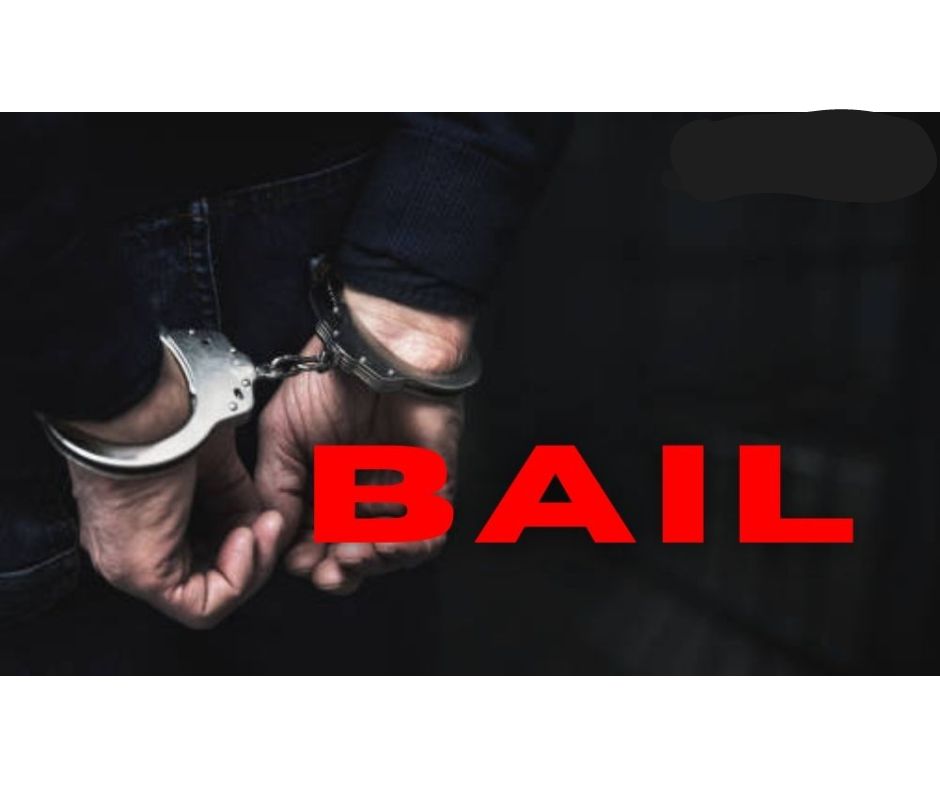Quick Summary
Bail is a critical part of criminal law in India. It ensures that an accused is not unnecessarily detained during the pendency of a trial while simultaneously safeguarding public interest and ensuring the accused’s availability during legal proceedings. Bail in the Supreme Court comes into play when an accused has exhausted all options in the lower courts and is seeking relief from the apex judicial body. This blog explores the concept of bail, recent case laws, legal precedents in the Supreme Court, and the overall importance of the bail process. It also delves into the conditions and procedures for filing bail petitions, along with special cases where the intervention of the Supreme Court is necessary.
Introduction
The Indian Constitution guarantees the right to liberty. However, when a person is accused of committing a crime, this fundamental right is restricted by judicial custody or detention. Bail serves as a mechanism through which an accused person can secure their release from custody, under the condition that they will appear for future court proceedings. In cases where the trial is prolonged or the accused fears undue detention, seeking bail in the Supreme Court becomes crucial.
The Supreme Court has developed significant legal precedents on the topic of bail. These precedents shape how lower courts handle bail matters and set guidelines for the balance between personal liberty and public interest. This blog will cover key aspects of bail in the Supreme Court, recent case laws, special cases, and legal procedures that are followed.
What is Bail?
Bail is the release of an accused individual from custody, typically with certain conditions, while ensuring that they will appear in court for future hearings. Bail does not imply that the individual is innocent or guilty; it merely serves as a temporary measure until the trial concludes.
The Indian legal system has different types of bail:
- Regular Bail: Granted under Sections 436 and 437 of the Criminal Procedure Code (CrPC), it allows the accused to be released from police or judicial custody.
- Anticipatory Bail: Under Section 438 of the CrPC, this is a pre-arrest bail issued when a person apprehends arrest for a non-bailable offense.
- Interim Bail: temporary bail granted for a short period while the main bail application is being heard.
When lower courts deny bail to an accused, they can approach the High Court. If bail is still denied, the final recourse is to file for bail in Supreme Court.
Recent Case Laws and Legal Precedents on Bail in the Supreme Court
Several recent case laws and legal precedents highlight the evolving jurisprudence on bail in the Supreme Court. Below are some key judgments:
Arnesh Kumar v. State of Bihar (2014): In this landmark case, the Supreme Court ruled that arrests should not be automatic for offenses punishable by less than seven years of imprisonment. The judgment emphasized that police officers must justify the need for arrest, ensuring that bail becomes the norm rather than the exception for minor offenses.
Satender Kumar Antil v. Central Bureau of Investigation (2022): In this case, the Supreme Court emphasized the need for timely disposal of bail applications and highlighted the misuse of pre-trial detention as a punitive measure. It provided detailed guidelines for the grant of bail and underscored the need for bail to be granted expeditiously.
Siddharth v. State of Uttar Pradesh (2021): The Supreme Court reiterated the principle that “bail is the rule and jail is an exception” and criticized the tendency of lower courts to delay bail hearings or deny bail without substantial reasoning. The court also stated that the accused’s rights must be balanced with the interest of justice.
- A. Najeeb v. Union of India (2021): In this case, the Supreme Court held that prolonged detention without trial violated an individual’s fundamental rights under Article 21 of the Constitution. The court granted bail even in a case involving serious offenses under the Unlawful Activities (Prevention) Act (UAPA), highlighting the importance of personal liberty.
Aslam Babalal Desai v. State of Maharashtra (1992): Although this is an older case, it set a lasting precedent that bail should not be granted merely on technical grounds. The court ruled that personal liberty must be balanced against the risk of the accused absconding or interfering with the investigation.
These cases show the Supreme Court’s focus on preventing unjust detention while ensuring public safety and the integrity of the judicial process.
Special Cases of Bail in Supreme Court
There are certain situations where the Supreme Court’s intervention in bail matters becomes particularly crucial. Some of these special cases include:
High-Profile Cases: Bail petitions filed in the Supreme Court often involve high-profile individuals, political figures, or cases with significant public interest. For example, cases under the Prevention of Money Laundering Act (PMLA) and UAPA frequently reach the Supreme Court due to the severity of the accusations and the long durations of detention.
Prolonged Detention Without Trial: One of the Supreme Court’s primary concerns is preventing excessive detention. In cases where the trial is delayed indefinitely or there are procedural lapses, the court may grant bail to uphold personal liberty.
Complex Cases Involving National Security: In cases where the accused is charged under national security laws like the UAPA, bail becomes extremely difficult to obtain. However, the Supreme Court, in its wisdom, balances the need for national security with individual rights.
Medical Grounds: In cases where the accused is suffering from serious medical conditions, the Supreme Court may grant bail to ensure that they receive proper medical care during the pendency of the trial.
Cognizable vs. Non-Cognizable Offenses: The severity of the offense often determines whether bail is likely to be granted. For non-cognizable offenses, where the accused does not pose a threat to society, the Supreme Court is more likely to approve bail.
Who Can File a Bail Petition in the Supreme Court?
Any individual whose bail has been denied by the High Court or any other lower court can file a petition in the Supreme Court. The petitioner could be the accused or their legal representative, appealing against the rejection of bail by the lower courts. Some specific parties who can file a bail petition include:
- Accused Individuals: Those charged with serious crimes, especially under non-bailable offenses.
- Legal Representatives: lawyers acting on behalf of the accused.
- Family Members: In special cases, family members may file bail petitions if the accused cannot do so due to health reasons or imprisonment.
- Public Interest Litigators: In rare cases, PILs (Public Interest Litigations) can also be filed, especially when the issue involves public interest or when bail matters affect a large group of people.
Time Limit for Filing a Bail Petition in the Supreme Court
There is no rigid time limit for filing a bail petition in the Supreme Court. However, prompt action is advised. Typically, the accused or their legal team will approach the Supreme Court immediately after the bail plea has been rejected by the High Court.
Additionally, the Supreme Court has emphasized in several rulings that bail matters should be treated with urgency due to their direct impact on the liberty of the accused. Delayed petitions might lead to prolonged detention, making it essential to file the petition as quickly as possible.
Procedure for Filing a Bail Petition in the Supreme Court
The process of filing a bail petition in the Supreme Court is detailed and requires the proper drafting of documents and adherence to legal procedures. Here is a step-by-step breakdown:
- Drafting the Petition: The bail petition must be drafted by the legal counsel of the accused. This document must include:
- Details of the case and charges.
- Previous decisions by the lower courts denying bail.
- Reasons for seeking bail (e.g., unjust detention, medical grounds, lack of substantial evidence).
- Filing the Petition: Once the petition is drafted, it must be submitted to the Supreme Court Registry. The petitioner is required to pay the necessary court fees.
- Serving Notice: The petitioner must serve a notice to the state or prosecuting party, informing them about the petition for bail.
- Hearing: The Supreme Court schedules a hearing where both the petitioner and the state present their arguments. The state typically argues against bail, citing the severity of the offense or the potential flight risk of the accused.
- Order: After reviewing all the arguments, the Supreme Court decides whether to grant or deny bail. The court may impose certain conditions on the bail, such as surrendering a passport, regular attendance at the police station, or restrictions on leaving the jurisdiction.
Conditions for Granting Bail in the Supreme Court
While considering bail applications, the Supreme Court examines several factors to determine whether the accused can be granted bail. Some of the conditions include:
Nature of the Offense: The court reviews whether the accused is involved in a bailable or non-bailable offense. Serious crimes, such as those involving national security or economic offenses, typically make it harder for the accused to obtain bail.
Flight Risk: Bail may be denied if the court feels that the accused might flee or evade trial.
Interference with Evidence: The Supreme Court may reject bail if there is a risk that the accused might tamper with evidence, intimidate witnesses, or obstruct the investigation.
Criminal Record: The court considers whether the accused has a history of criminal behavior. Bail is less likely to be given to repeat offenders.
Health and Age: If the accused is of advanced age or suffering from severe medical conditions, the Supreme Court may grant bail on humanitarian grounds.
Conclusion
Bail is a critical legal concept designed to protect the personal liberty of individuals while ensuring that justice is served. Bail in Supreme Court often comes into play in serious cases where lower courts have rejected bail and the accused is looking for relief from the highest judicial authority. Through its judgments and legal precedents, the Supreme Court has significantly shaped the bail process, ensuring a balance between safeguarding individual rights and upholding public interest.
By understanding recent case laws, special cases, and the procedural requirements for filing bail petitions in the Supreme Court, individuals can navigate the complexities of the bail process more effectively. Whether you are facing a prolonged trial, health issues, or concerns over an unfair trial, knowing when and how to approach the Supreme Court for bail can make all the difference.




